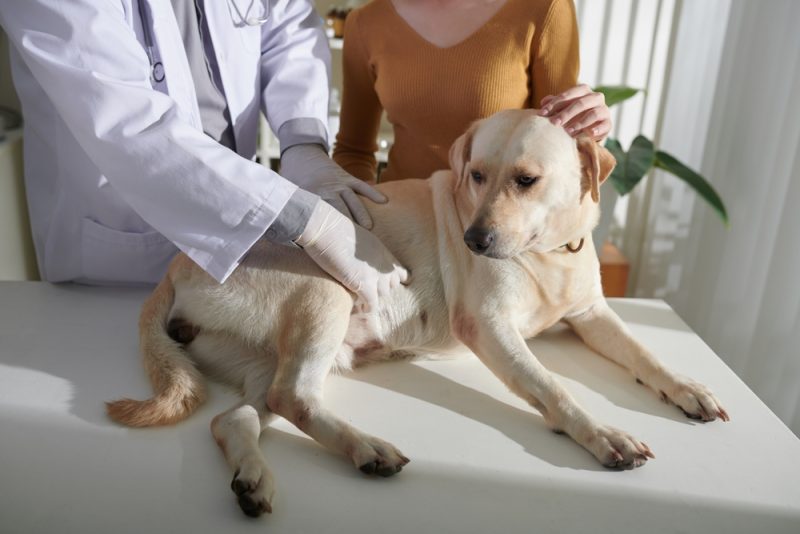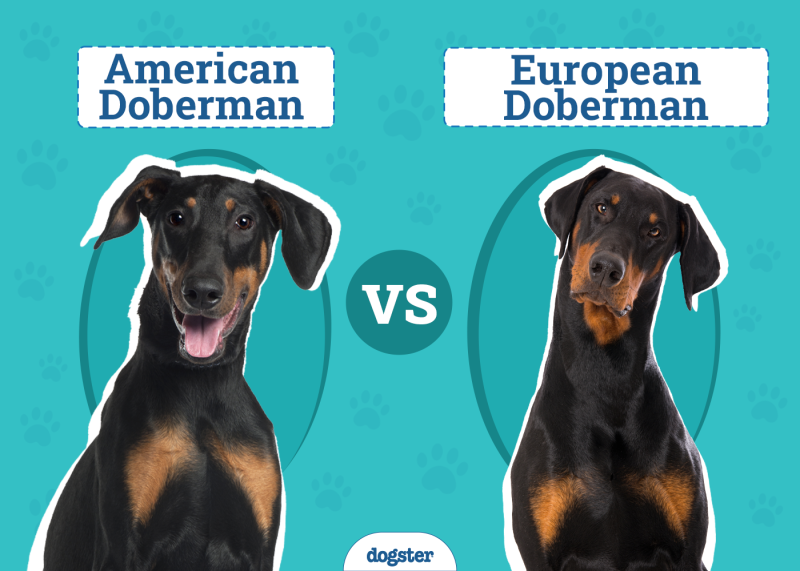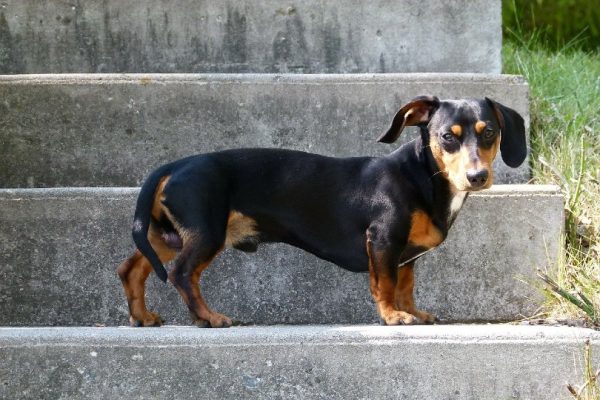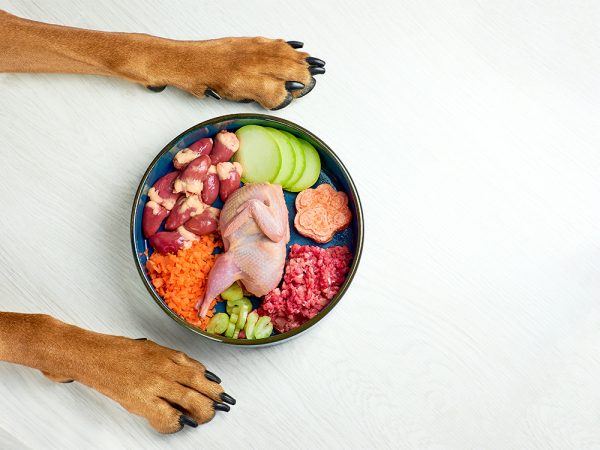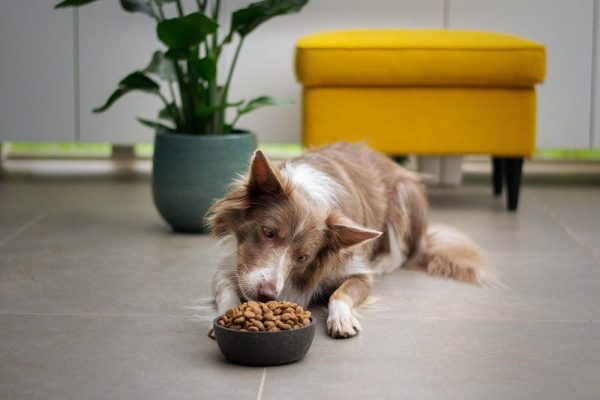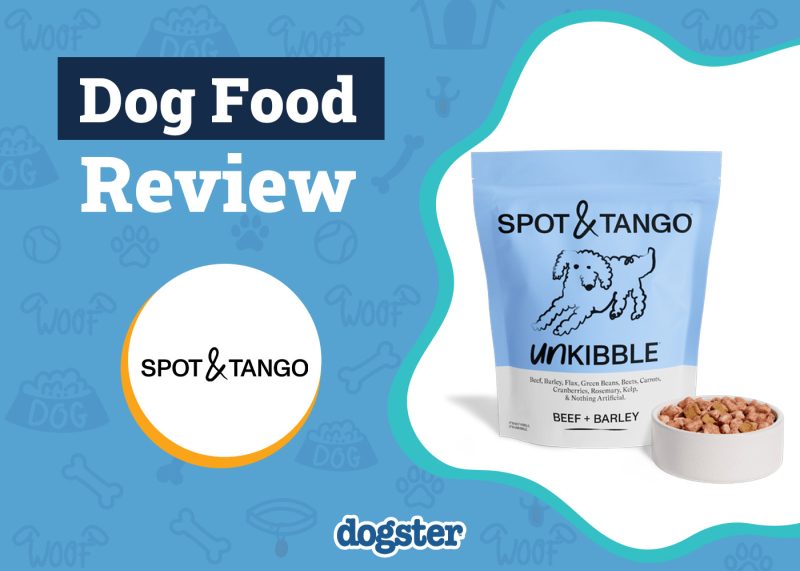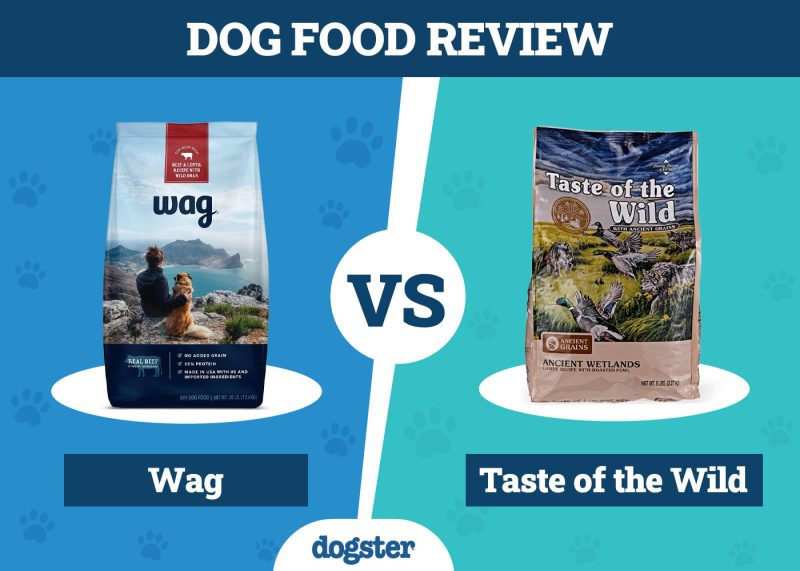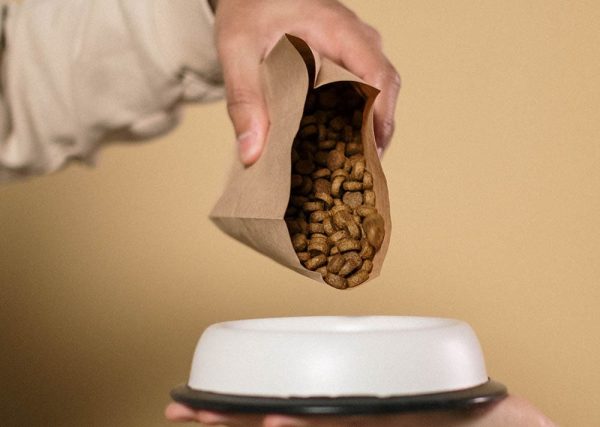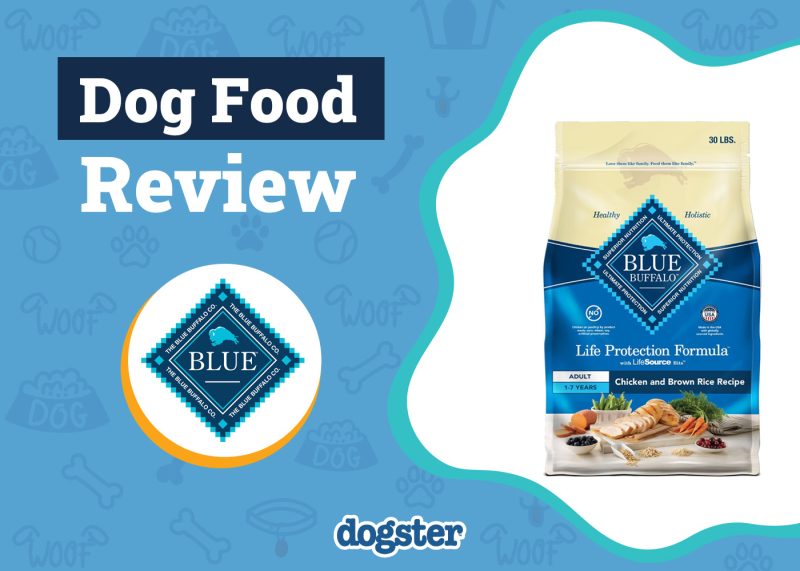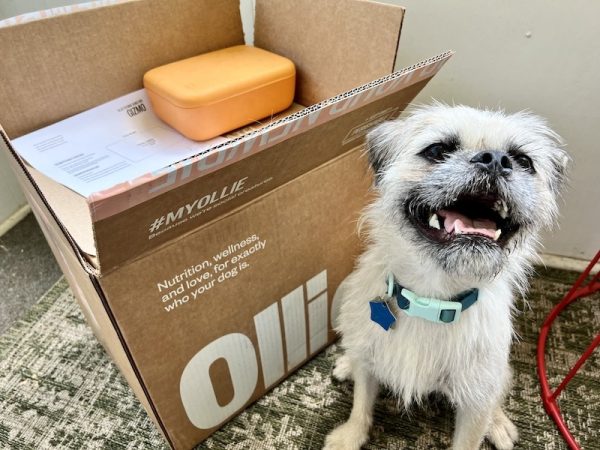In this article
View 4 More +Does your dog enjoy playing with stuffed animals or toys? I know some of mine have absolutely obliterated their toys over the years. Before I was a veterinarian, I didn’t think anything of it, but now I look at a destroyed toy as the problem it could be.
Do you know what to do if your dog ate a stuffed toy or a similar object? This is an emergency situation, and you need to contact your veterinarian immediately to determine if you need to come in (you probably do).
If you need to speak with a vet but can't get to one, head over to PangoVet. It's an online service where you can talk to a vet online and get the personalized advice you need for your pet — all at an affordable price!

Signs That Your Dog Ate a Stuffed Toy
If you come home to the scene of the great stuffed toy massacre, take a deep breath, and get the material away from your dog as safely as possible. Don’t get bitten, but see if you can get your pup to drop any stuffing in their mouth. Round up the toy pieces to estimate how much might have been eaten. Contact your veterinarian or local veterinary emergency hospital.
If you’re unsure if your dog ate a stuffed toy, you could still contact your vet and discuss the possibility. They might want you to bring your dog in for X-rays or suggest monitoring your pup.
- Vomiting
- Inappetence
- No stool produced
- Diarrhea
- Abdominal tenderness or pain
- Lethargy
- Resting in a downward dog-type position
If it’s purely a soft toy, the obstruction is likely the worst thing that can happen (and it’s still pretty bad). But if your dog has eaten something with sharp points, it could perforate the intestines and cause sepsis.
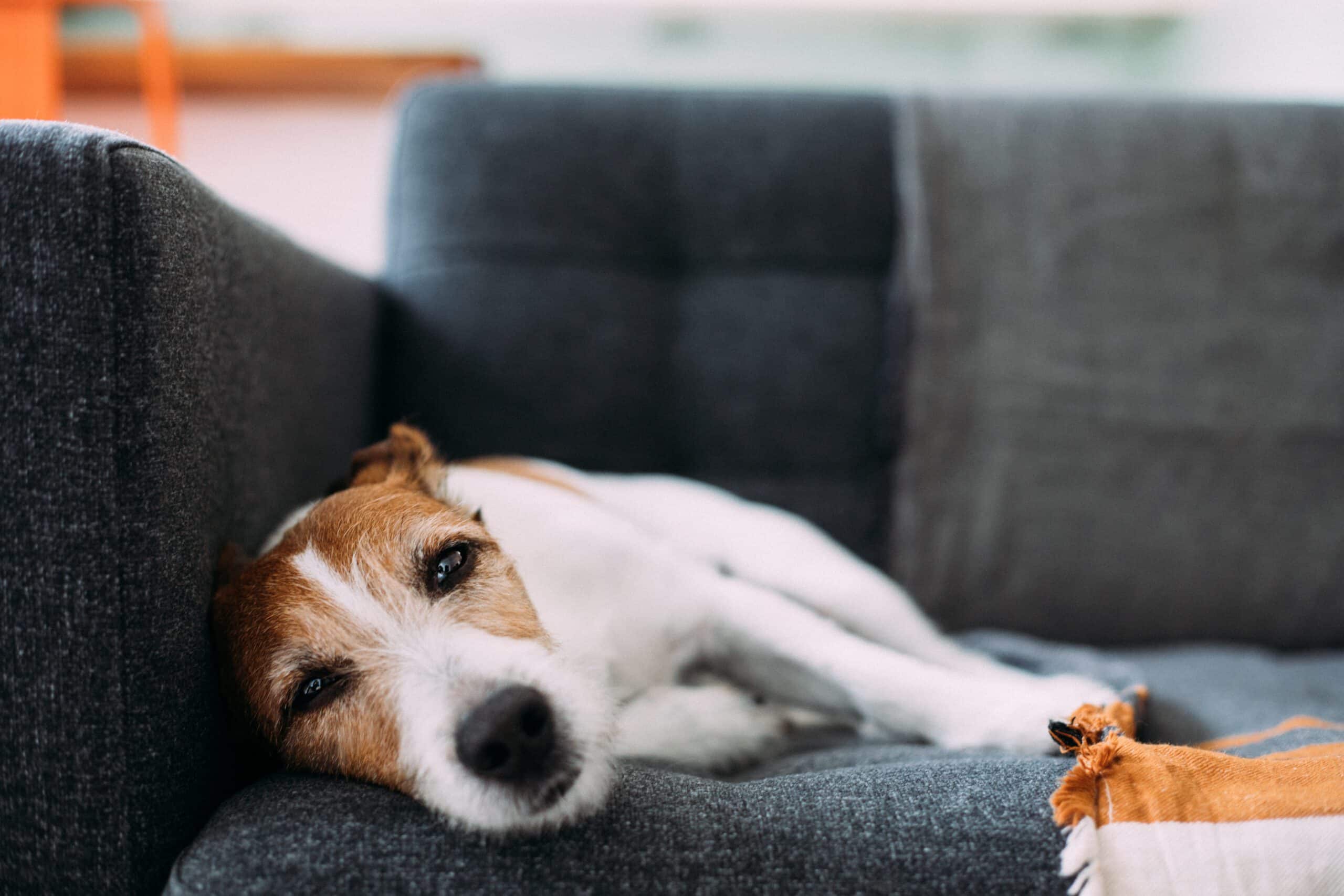
Diagnosing an Intestinal Obstruction in Dogs
If you know your dog ate something, your veterinarian will perform an exam to see if your pup is symptomatic. If you’re unsure if they ate something, they’ll look for more clues, like fibers stuck in your dog’s teeth.
Your veterinarian may recommend radiographs (commonly called X-rays) to evaluate your dog’s abdomen and see if there are changes consistent with eating something. They might need to give a contrast material called barium that can help outline a blockage as it moves through the gut (or doesn’t move with a complete obstruction).
If your dog needs surgery, your veterinarian will generally run blood work to assess their internal organs and determine what supportive care may be required.
Treating a Foreign Body Ingestion in Your Dog
Depending on what and when your dog ate, your veterinarian may be able to induce vomiting in your dog. While hydrogen peroxide used to be commonly used, there are better options to trigger emesis. Apomorphine and Clevor are great products if used shortly after your dog ate the toy.
If the object or stuffing is lodged in the intestines, your veterinarian may need surgery to remove the blockage. Some vet hospitals have an endoscopy, which can be a much less invasive way of diagnosing and removing foreign bodies from your dog’s stomach.
Unfortunately, if your dog has been obstructed for an extended period, portions of the intestines may need to be surgically removed, as they could be too damaged and even leaky, leading to conditions like peritonitis.
Depending on the signs that your dog is exhibiting, they may need supportive care, such as fluid therapy, anti-nausea medications, antibiotics, and pain medications.
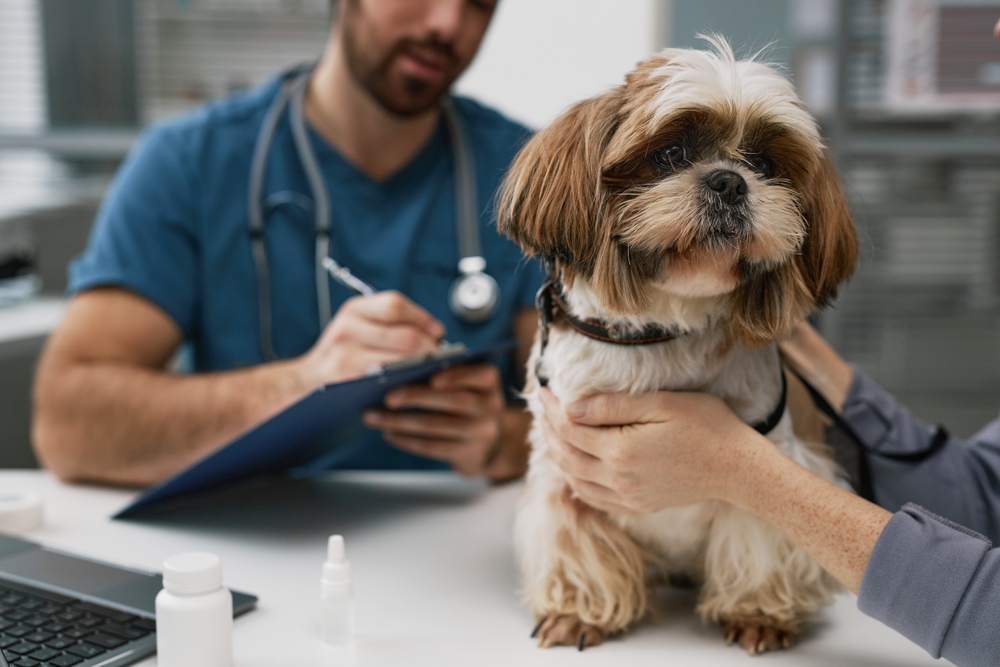
Preventing Your Dog From Eating a Stuffed Toy
First and foremost, use toys that are the appropriate size for your dog. Big dogs should not chew on small toys that they can easily swallow. Vigorous chewers usually shouldn’t have easy-to-tear stuffed toys to play with. Chews and tips should only be used when your dog is under supervision.
There are alternatives to stuffed toys that can be safer for many dogs.
Puzzle Toys
These toys are usually quite durable. You’ll put kibble or treats in them, and your dog has to manipulate the toy to get the food out. As an added advantage, these toys provide mental enrichment.
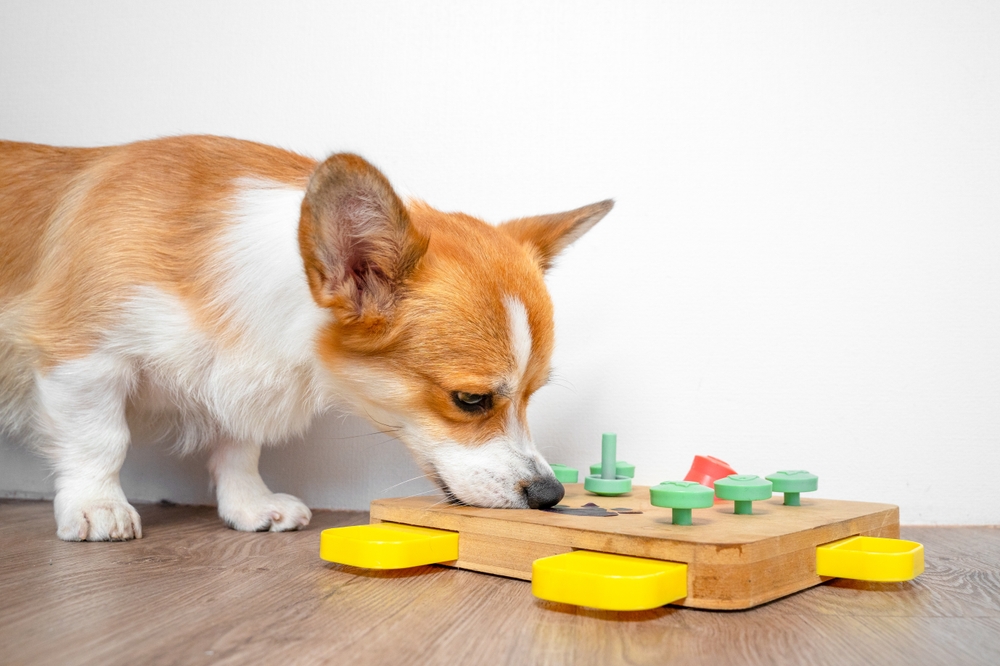
Lick-Mats
You can spread treats or pet-safe peanut butter on these mats that are generally easy to wash. Your dog can spend time licking the mat and relaxing, but remember, they might make a mess!
Durable Toys
You’ll find plenty of toys if you look for toys labeled for aggressive chewers. Examples are the Kong Extreme and the Chuck It! Ultra Ball.
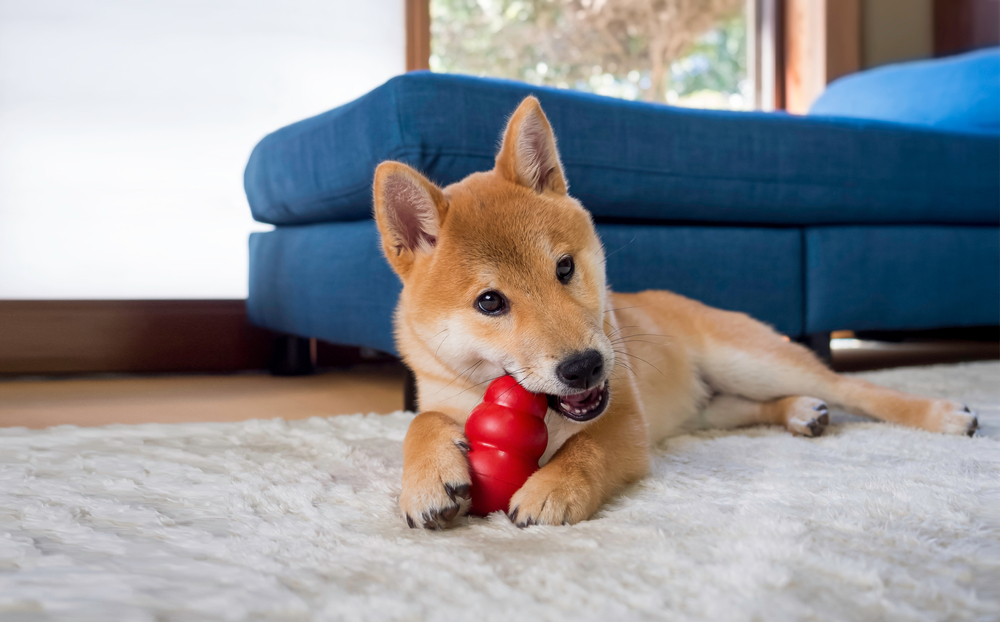

Frequently Asked Questions
What do I do if my dog destroys things at home when I’m not there?
Your dog could have separation anxiety, and you should talk to your vet immediately to see if your vet wants to try a medication like fluoxetine or Prozac.
You could also take your dog to doggie daycare to keep them occupied when you’re not home.
Are rawhides or plastic chew toys safer than stuffed toys?
The best toys are the ones your dog won’t destroy. Unfortunately, plastic toys can break, leaving sharp pieces that can cut your dog’s intestines, even perforating them. Both toy types can also easily obstruct your dog if it eats them.

Conclusion
If your dog ate a stuffed toy, you should get them examined by a veterinarian to see if the material might become an obstruction requiring surgery. Don’t try to make them vomit at home. Gather as much information as you can about the situation so you can give the details to your vet.


